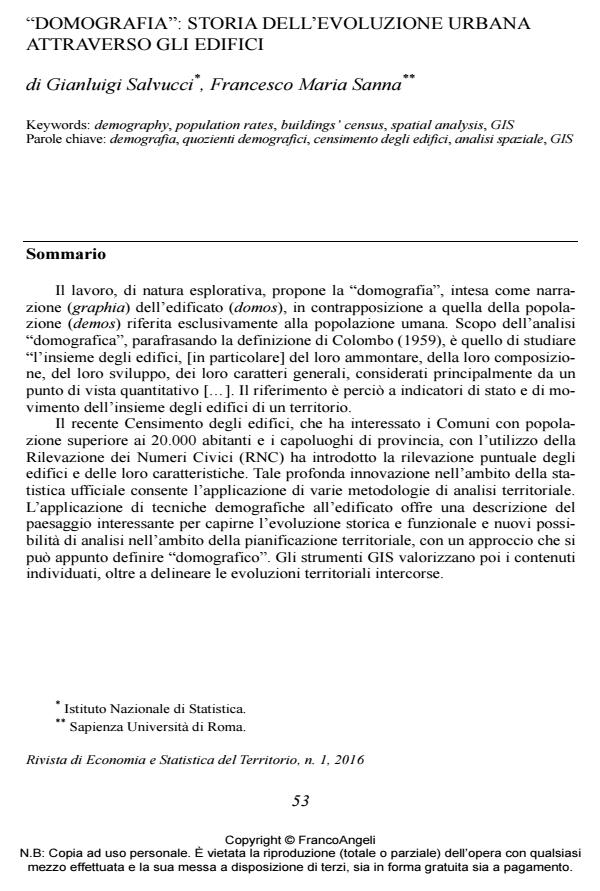"Domography": an history of urban evolution through buildings
Journal title RIVISTA DI ECONOMIA E STATISTICA DEL TERRITORIO
Author/s Gianluigi Salvucci, Francesco Maria Sanna
Publishing Year 2016 Issue 2016/1
Language Italian Pages 18 P. 53-70 File size 259 KB
DOI 10.3280/REST2016-001003
DOI is like a bar code for intellectual property: to have more infomation
click here
Below, you can see the article first page
If you want to buy this article in PDF format, you can do it, following the instructions to buy download credits

FrancoAngeli is member of Publishers International Linking Association, Inc (PILA), a not-for-profit association which run the CrossRef service enabling links to and from online scholarly content.
The paper aims to analyze the evolution of the whole buildings in an area treating them as a population, applying the traditional demographic analysis tools. The reference is therefore to the usual demographic rates; hence the proposal of the neologism "domography". Methods and Resultats The recent Italian Census of the buildings (2011), using the House Numbers Survey (RNC) in all municipalities with more than 20,000 inhabitants, allows the application of various spatial analysis methodologies to analyze the main characteristics of the buildings and their evolution. The application of demographic techniques to the buildings offers an interesting description of Italian landscape in order to understand the historical and functional evolution. The GIS tools enhance the identified content and outline the territorial changes that occurred. Conclusions The exploratory analysis showed various opportunities for the use of a "domographic" approach in the context of spatial planning.
Keywords: Demography, population rates, buildings’ census, spatial analysis, GIS
Jel codes: R14, R20, J19.
Gianluigi Salvucci, Francesco Maria Sanna, "Domografia": storia dell’evoluzione urbana attraverso gli edifici in "RIVISTA DI ECONOMIA E STATISTICA DEL TERRITORIO" 1/2016, pp 53-70, DOI: 10.3280/REST2016-001003